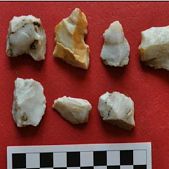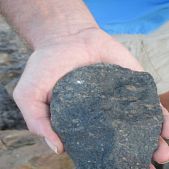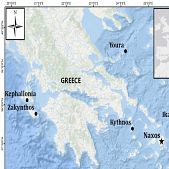
New data on Stelida Naxos for Neanderthals existence
Until relatively recently the Cycladic islands were not believed to have been colonised by humans until farmer arrived in the Late Neolithic, some 7000 years ago. This long-held view is now being reconfigured through the discovery by Greek archaeologists of a well-dated Mesolithic (late hunter-gatherer) village on Kythnos, and claimed Mesolithic – Middle Palaeolithic activities at Stélida on Naxos.
Despite the fact that hitherto the earliest direct evidence for activity in the Cyclades was the fifth millennium BC (Late Neolithic), an earlier prehistoric date was tentatively suggested when the site at Stélida was discovered in 1981. The site remained a chronological enigma until recent rescue excavations led to claims of Middle–Upper Palaeolithic and Mesolithic activity. In 2013 the Stélida Naxos Archaeological Project (SNAP), a two-year survey dedicated to characterising geoarchaeologically the chert source and associated knapping areas, was initiated.
The quarry was clearly being exploited from the Lower Palaeolithic (likely by Homo heidelbergensis), followed by major stone working in the Middle Palaeolithic (Neanderthals), and then through the earlier Upper Palaeolithic and Mesolithic (Homo sapiens sapiens), i.e. a history of intermittent usage that spans from at least 300,000 to 9,000 years ago.
The discovery of such early material on Naxos has potentially major significance for how researchers view the earliest peopling of Europe. With recent sea-level reconstructions suggesting a landbridge between Anatolia and the southern Greek mainland, Stélida may provide evidence that the Aegean represented a thoroughfare for early human migrations, rather than the barrier it was long considered to be.
The Stélida material thus provides evidence of human exploitation of the Cyclades far earlier than previously thought, and the Middle–Late Pleistocene dates are in accord with new evidence of early human occupation and/or visitation of Crete. Moreover, in the Aegean and the Mediterranean more generally, Denticulate Mousterian and Levallois technologies are associated exclusively with Neanderthal populations, whereby the Stélida finds arguably provide the first evidence for Neanderthals on Naxos, and in the Cyclades more generally.
Stélida is a rare example of a Middle Palaeolithic chert extraction and tool production site. The characterisation of the site and refinement of its chronology (ideally with absolute dates from excavated strata) will improve understanding of the earliest exploitation and colonisation of the Cycladic Islands and the wider Aegean basin.














